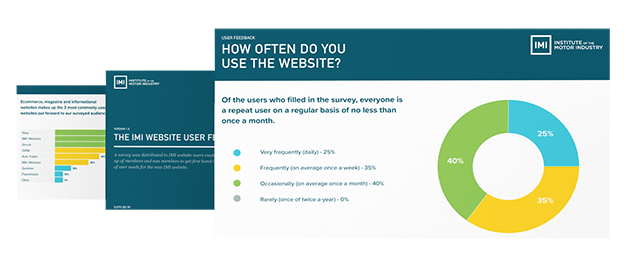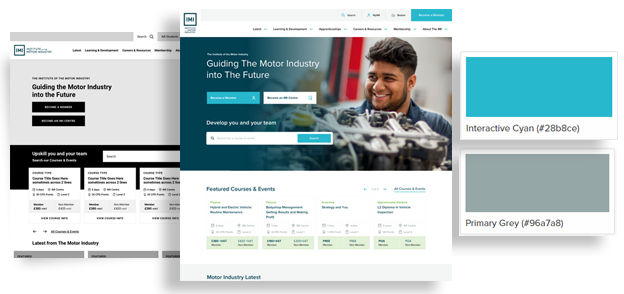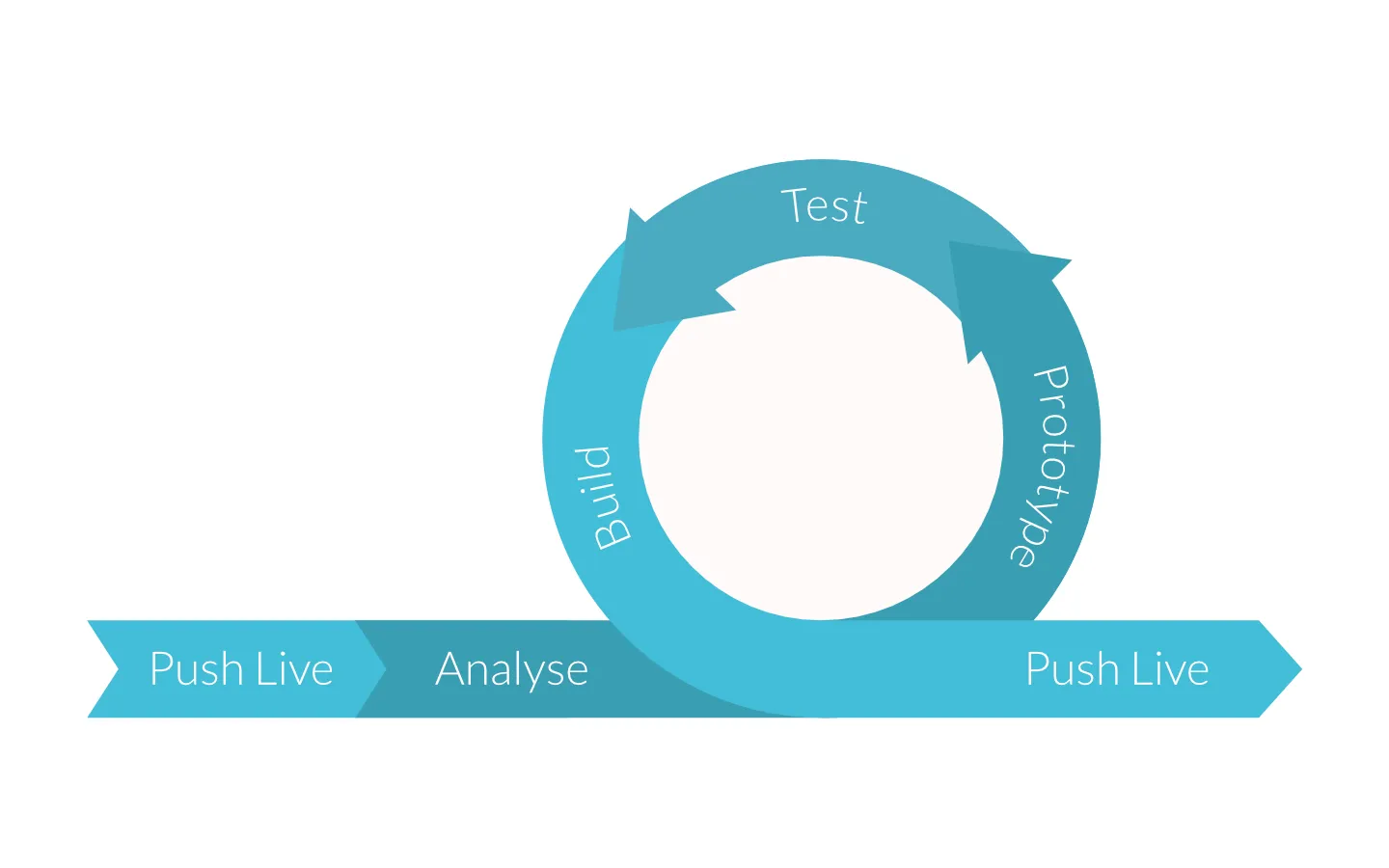Does this sound familiar? After a painful, time-consuming, and expensive redesign, you finally relaunch your new site. After briefly patting yourself on the back, everybody moves on, and nothing much changes.
A few years down the line, your website is out of date and neglected, so you start the whole process again.
The problem is that it is all too easy to treat your website as a glorified brochure — you launch it and forget it. However, we need to think in terms of the digital services that we are providing to our customers.
What is a digital service?
A website is a digital service, but so are our social media channels, customer portals, mobile apps, newsletters, or, indeed, any other digital interaction between you and your customers.

Consider the full service journey.
A digital service cannot just be thrust into the world and forgotten. It needs ongoing management, more like how you would run a store than produce a brochure.
Financially, you need to think of your digital services as operational expenses rather than capital expenses that must be spent every few years.
Each digital service needs an owner, a budget, and people to work on it regularly.
I know what you are thinking. That all sounds expensive. However, it may well work out cheaper, and it will certainly generate a higher return on investment.
Why digital services are preferable
As I said in my previous article on this website, building a website and then doing very little to improve it until the next big redesign is very damaging.
First, your website will never be running at peak performance. A newly launched site is only a best guess at what users will respond to, and the only way you can ensure it works properly is to monitor user behaviour and adapt.
Then there is the fact that the website will slowly become out of date over time, further reducing its effectiveness.
The second problem with the launch and forget approach is that when the website becomes so outdated that you redesign it, you typically throw everything out and start again. That is incredibly inefficient and expensive. Instead, it is more cost-effective to evolve the website over time.
A continual, lower level of spending is far better for ensuring your digital services provide the maximum return for the minimum investment.
That said, not all of the digital services that organisations launch are as well thought through as they should be. In those cases, no amount of post-launch optimization will fix them. Therefore, it is crucial that any digital service you have is conceived, built, and run extremely carefully if you want to see the maximum return.
How to build and run a digital service
As should be clear at this point, launching and running any digital service is a significant commitment in time and resources. Unfortunately, this commitment is routinely overlooked, leading to services that are more of a drain on the organisation than a benefit.
We can avoid this from happening by having a robust process for assessing digital services we are considering launching, as well as for building and running them. A process that minimises risk and maximises return.
This process consists of 5 steps that every digital service will pass through in its life. These are:
- Discovery
- Prototype
- Build
- Live
- Retire
Let’s explore each in a little more depth so you can see the benefits they provide, starting with discovery.
Evaluate with a discovery phase
There are a near-limitless number of things you could do online that can help with everything from attracting new customers or serving existing ones to improving productivity or increasing brand awareness.
However, with limited resources, you cannot do everything and need a way of assessing ideas to see which will provide the best return on your investment. That is what a discovery phase involves.
Through user research, competitive analysis, technology reviews, and various other techniques, a potential digital service is assessed for its viability and how likely it is to benefit the organisation.

Discovery is a chance to research and gather insight.
The discovery phase is typically carried out by a combination of digital experts and internal stakeholders, who work together to assess the proposed service.
If the assessment goes well, the service moves to the next stage. However, if it is found to be impractical, it can be shelved before significant resources are invested.
Of course, sometimes the service might be a good idea, but others hold more immediate potential, in which case the idea can be revisited later.
Once a potential digital service passes the discovery phase, it moves to prototyping.
Define a digital service through prototyping
The prototyping phase is where the digital service is defined in detail. Traditionally this has been done as some form of brief or functional specification. However, these are rarely a good idea for three reasons.
- They are often created without the input of the people who will actually build the digital service and are regularly unrealistic, lacking in detail, and full of ‘wish list’ functionality.
- A written specification is easy to misunderstand, and that can often lead to scope creep later as stakeholders struggle to find agreement on what they want to build.
- You cannot test a written specification to ascertain whether it will work in practice and meet the needs of both the business and the target audience.
To address these issues, we instead create an interactive prototype of the digital service. This prototype can be tested with real users and involves the digital team in its creation. However, best of all, it provides a clear visual representation of what is going to be built that everybody can agree upon.

An early prototype we created for The IMI to help testing
Because the scope is clearly defined in the prototype, the cost of building the service can be more accurately estimated. A decision can then be made based on these costs, and the results of user testing, to ascertain if the digital service should move on to the next phase. In other words, the organisation will have a clear picture of whether the service should be built.
Build with speed and confidence
The build phase is largely as you expect. However, the build tends to go much more smoothly with a detailed and well-tested prototype in place. In addition, more attention can be given to factors such as performance, security, and robustness as decisions around design and content have already been made.
What is more, with such a clear definition of what is being built, scope creep is rarely a problem, and the build can easily be delivered on time and within budget.
The build phase will not always deliver every aspect of the prototype. Therefore, a decision could be made to launch a minimum viable product initially with the intention to add additional functionality over time post-launch.
Whatever the case, the project does not end when the digital service goes live. Instead, it moves into a post-launch iteration phase.
Improve through post-launch iteration
In many ways, the post-launch phase of a digital services life is one of the most critical. That is because this is the point when we begin to get data about how real users are behaving on the website.
The post-launch phase provides us with an opportunity to monitor behaviour, gather feedback and iterate upon the website to maximise its effectiveness.
Using tools like heat maps, analytics, and session recorders, you can identify underperforming areas of the service.
You can then use this data to form hypotheses about improvements that can be made, which will be tested through further prototyping or by running AB tests on the live website.
Whatever the approach adopted, the objective is to ensure the digital service performs at peak efficiency to maximise the return.
Alongside this work, the post-launch phase is an opportunity to adapt the website for changing business requirements, ensuring that the service remains relevant and will not require a major redesign every few years.

That said, no digital service exists forever, so it will eventually need to be retired.
Know when to retire a service
Because hosting is so inexpensive, organisations often give little thought to when content or, indeed, entire digital services should be removed. However, this is an important consideration as every service needs ongoing maintenance. If the content is not maintained, it can undermine a brand as well as damage findability and potentially provide users with misleading information.
As a result, organisations need to have a policy for deciding when a particular service is no longer fit for its purpose. This policy may be built around a decline in stats, a failure to meet key performance indicators, or simply after a certain period of time has passed.
However, in addition to thinking through when a service is retired, organisations also need to plan how it will be retired.
Consideration needs to be given to how users will be informed and what alternatives you can offer. Particular thought will also need to be given to where traffic will be sent once the service has been retired.
More than a project
As you can see, commissioning a digital service is more than simply running a project. A digital service requires long-term organisational commitment and associated resources.
Because of these hidden costs, an organisation should not create a new digital service lightly. Instead, it needs a robust process that can validate the need and clearly define the service to make it fit for purpose.
For organisations that are not digital-first, this can involve a considerable shift in thinking, which is why getting outside support is often advisable.
Heavy Penguin help organisations within Membership, Charity and not-for-profit sectors build the right digital solutions. Get in touch today for a chat.